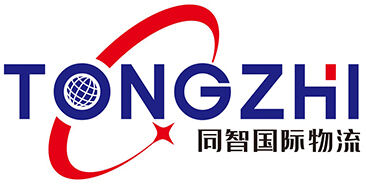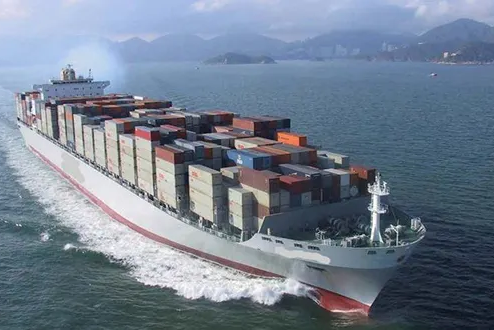Containertransport er rygraden i den globale handel, hvilket gør det muligt at flytte varer effektivt og sikkert over hele verden. Med den stadig voksende efterspørgsel efter international handel skal virksomheder forstå de nuancerede aspekter ved containertransport for at optimere deres logistikoperationer. Denne artikel undersøger bedste praksis og vigtige overvejelser for at maksimere effektiviteten i containertransport.
Forståelse af containertransport
Containervogn er at transportere varer i store, standardiserede containere. Disse containere kommer i forskellige størrelser, hvoraf de mest almindelige er 20-fod og 40-fod containere. Standardiseringen gør det muligt at overføre seemløst mellem skibe, lastbiler og tog, hvilket gør det til en fleksibel og effektiv transportform.
Nøglefordeler ved containervogn
Effektivitet: Containere er designet til nemt håndtering og stabeling, hvilket forhaster ind- og udlæsningen på havne. Denne effektivitet oversættes til hurtigere transit tider og reducerede omkostninger.
Sikkerhed: Varer transporteret i containere er mindre følsomme over for skade og tyveri. Den robuste konstruktion af containere giver fremragende beskyttelse mod elementerne og potentiel tyveri.
Kosteffektivitet: Containervogn er generelt mere kosteefektiv end andre transportformer, især for lange afstande internationale fragter. Evnen til at samle flere fragter i én container reducerer yderligere omkostningerne.
Flæksibilitet: Beholdere kan transportere en lang række varer, fra råmaterialer og maskiner til fødevarevarer og færdige produkter. Specialiserede beholdere, såsom kølebeholdere (reefers), opfylder specifikke behov som temperaturregulering.
Bedste praksis for containertransport
Vælg den rigtige containertype
At vælge den korrekte containertype er afgørende for at sikre en sikker og effektiv varetransport. Standardtørre beholdere er egnet til de fleste typer af last, men virksomheder bør overveje specialiserede beholdere til specifikke behov:
Kølecontainere (Reefers): Til fødevarevarer, der kræver temperaturregulering.
Åbent-top-beholdere: Til oversize last, der ikke passer ind i en standardcontainer.
Fladrak-beholdere: Til tunge og store genstande som maskiner og køretøjer.
Optimer containerudnyttelsen
At maksimere brugen af den tilgængelige plads inden i en container kan betydeligt reducere fragtkostnadene. Virksomheder bør:
Pak og stille varer korrekt: Sørg for at varer er pakket stramt og sikkert for at forhindre skifting under transport.
Brug paletter og skider: Lett gør håndtering og effektivt brug af plads.
Fordel vægten jævnt: Fordel vægten jævnt for at opretholde stabilitet og forhindre skader.
Implementér avancerede sporingsystemer
Real-time sporings- og overvågningsaf leverancer giver dybdegående indsigt og forbedrer synlighed igennem hele leveringsprocessen. Avancerede sporingsystemer tilbyder:
Opdateringer af placering i realtid: Hold virksomheder informerede om placeringen og status for deres leverancer.
Tilstandsovervågning: Sørg for at temperatursensitive varer forbliver inden for den påkrævede rækkevidde.
Forudsigelsesanalyse: Forudsag potentielle forsinkelser og optimér ruter til hurtigere levering.
Sørg for overholdelse af regler
Overholdelse af internationale fragtregler er nødvendig for at undgå forsinkelser og botter. Virksomheder bør:
Forbliv informeret om handelsregler: Hold dig opdateret om import/export-lovgivning og toldkrav for hvert destinationland.
Forbered nøjagtige dokumenter: Sørg for, at alle nødvendige dokumenter, såsom fragtbilletter, oprindelsecertifikater og tolderklæringer, er korrekt udfyldt og indgivet til tiden.
Arbejd med erfarene toldmæglere: Facilitér en smukkende toldafvikling og minimér risikoen for overholdelsesproblemer.
Brug teknologi til forbedret effektivitet
Teknologi spiller en afgørende rolle i optimering af containerskibsfarten. Virksomheder bør implementere:
Skibsfartshåndteringssoftware: Forenkler booking, dokumentation og sporingsprocesser.
Automatiske godsbehandlingsystemer: Forhaster ind- og udladningsoperationer på havne.
Blockchain-teknologi: Forbedrer gennemsigtighed og sikkerhed i forsyningskæden ved at levere et ændringssikkert register over transaktioner og bevægelser.
Nøgleovervejelser for containerskibsfart
Kostnadsstyring
Fragtomkostninger kan betydeligt påvirke en virksomheds bottom line. Nøgletalstrategier til at administrere omkostninger inkluderer:
Sammenføjning af fragter: Kombiner flere fragter i én container for at gøre brug af skalafordele.
Forhandlinger af kontrakter: Sikr favorable priser og vilkår med fragtselskaber og fraktfremadskaffere.
Optimering af ruter: Vælg de mest effektive og kostnadseffektive ruter for at minimere transit-tider og reducere brændstofsforbrug.
risikostyring
At administrere risici forbundet med containervirksomhed er afgørende for at sikre den sikre og tidsmæssige levering af varer. Overvej følgende:
Forsikringsdækning: Beskyt mod potentielle
tab på grund af skader, tyveri eller forsinkelser.
Kontingensplanlægning: Udvikl planer for at håndtere uventede forstyrrelser, såsom havne-strejker eller naturkatastrofer.
Regelmæssige revisioner: Gennemfør revisioner af fragtprocesser og partnere for at identificere og mindske risici.
bæredygtighedspraksis
Bæredygtighed bliver stadig vigtigere inden for global logistik. Virksomheder kan overtage miljøvenlige praksisser såsom:
Brug af brændstofseffektive skibe: Vælg søveje, der bruger moderne, brændstofseffektive skibe for at reducere kulstofudslip.
Implementering af grønne pakkeløsninger: Brug genanvendelige og nedbrydelige pakkelomme-materialer for at minimere miljøpåvirkningen.
Kompensation af kulstofudslip: Deltag i kulstofkompenseringsprogrammer for at neutralisere den miljømæssige fodspor af fragtsaktiviteter.
Konklusion
Containervogn er et vigtigt element i international handel, hvilket giver effektivitet, sikkerhed og prisfordel. Ved at implementere bedste praksisser såsom valg af den rigtige containertype, optimering af containerudnyttelse, udnyttelse af avancerede sporingsystemer, sikring af overholdelse af regler og indførelse af teknologi kan virksomheder maksimere fordelene ved containervogn. Yderligere er omkostningsadministration, risikominimering og indførelse af bæredygtighedsvenskede praksisser afgørende for at opretholde en konkurrencemæssig fordel på den globale marked.







































